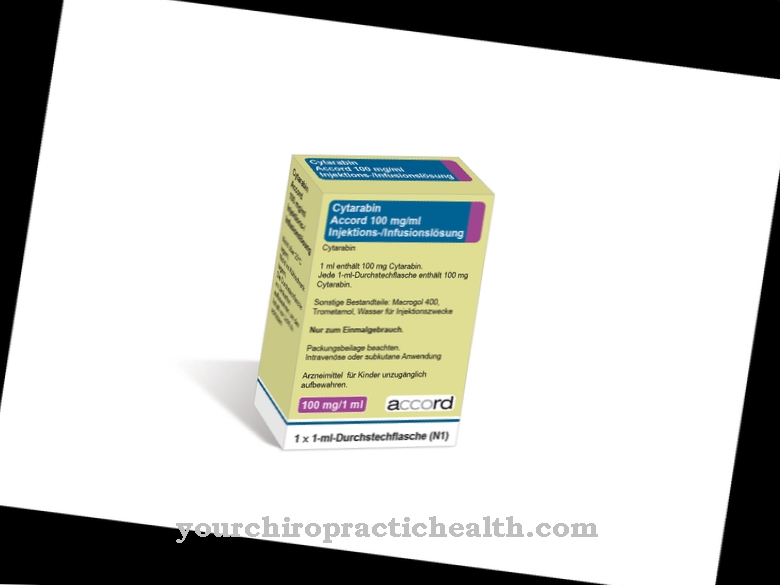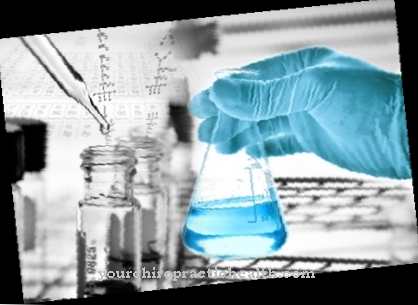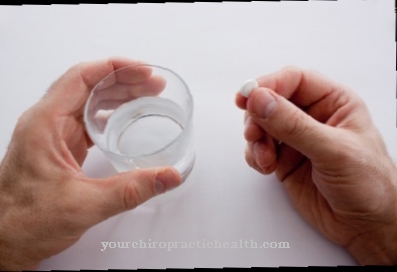As Lincosamides is called a group of antibiotics. These include the active ingredients lincomycin and clindamycin. Clindamycin is important in human medicine for the treatment of infections of the bone, respiratory tract and skin.
What are lincosamides?
Lincosamides are antibiotics. As such, they work against bacteria in the body. The chemical term for the lincosamides is the name Acylaminopyranosides. The term is explained by the chemical structure of the substance. Chemically, the lincosamides are derived from the pyranoses. These are monosaccharides with a six-ring structure.
Medically significant lincosamides are the antibiotics clindamycin and lincomycin. The active ingredient lincomycin is obtained by isolation from the bacterium Streptomyces lincolnensis. The medicinally used lincomycin A consists of propylproline and methylthiolincosaminide. Propylproline is a derivative of the amino acid proline. Methylthiolincosaminide is a derivative of octose, a C8 sugar. The connection between the two substances is an amide bond.
The active ingredient clindamycin is produced semi-synthetically from lincomycin by chlorination. Clindamycin is used in Germany in both human and veterinary medicine. Lincomycin is only approved for use in veterinary medicine in Germany. It is also used in human medicine in the United States and Canada.
Pharmacological effect
The lincosamides have a bacteriostatic effect in the body. They inhibit the growth of bacteria. The antibiotics from the group of lincosamides are also known as protein synthesis inhibitors. They inhibit protein synthesis in bacteria by binding to the 50-S subunit of the bacteria 's ribosomes. This means that they can no longer produce proteins that are necessary for further growth.
Lincomycin works well against gram-positive pathogens. They include streptococci and staphylococci. After administration, the substance enters the body's own phagocytes, the macrophages. There it accumulates and is transported by the cells to the site of action. The active ingredient is broken down by the liver. The substance is again excreted with the urine and faeces.
In addition to its bacteriostatic effect, clindamycin can also have a bactericidal effect at high doses, i.e. it can kill bacteria. The active ingredient can also be used to treat infections caused by gram-positive aerobic pathogens such as streptococci and staphylococci. Clindamycin is also effective against gram-negative anaerobes and against chlamydia. Toxoplasma gondii, the causative agent of toxoplasmosis, can be treated with a combination of clindamycin and the active ingredient pyrimethamine.
Clindamycin is easily absorbed when ingested. 90% of the active ingredient is absorbed and transported to the site of the infection by binding to plasma proteins. In addition to the internal organs, body fluids such as pleural and joint fluids as well as tissues such as skin and bone marrow are also reached by the active substance.
Clindamycin can cross the placenta and thus pass onto the fetus in pregnant women. The active ingredient also passes into breast milk. Clindamycin is also broken down by the liver. It is excreted in the faeces and urine.
Medical application & use
In veterinary medicine in Germany, lincomycin is mainly used to treat infectious diseases of the respiratory tract, skin and eyes. The active ingredient is administered orally, intramuscularly or intravenously.
Clindamycin is used in human medicine to treat various infections. The active ingredient can be given orally or intravenously. One area of application is the treatment of osteomyelitis, an inflammation of the bone. It can occur as part of the diabetic foot syndrome.
Chronic osteomyelitis can also be treated with clindamycin. Mainly when the infection is triggered by the pathogen Staphylococcus aureus. The joint inflammation caused by bacteria, septic arthritis, is another possible application of the drug.
In dentistry, the active ingredient is used to treat infections in the oral cavity. Another area of application for clindamycin is inflammatory skin conditions such as boils or abscesses. The active ingredient is also used to treat acne. The erysipelas (wound rose), an extensive inflammation of the skin due to an infection with streptococci, can also be treated with clindamycin.
The active ingredient is used to treat upper and lower respiratory infections. These include inflammation of the tonsils, throat and sinuses as well as bronchitis, pneumonia and lung abscess.
In gynecology, clindamycin is used to treat inflammation of the uterine lining, fallopian tubes and ovaries as well as infections with chlamydia.
Clindamycin is considered a substitute antibiotic for patients with an allergy to penicillin.
Risks & side effects
Lincosamides have the same principle of action as the macrolide group of antibiotics. This can lead to cross-resistance between macrolides and lincosamides. Lincomycin must not be used orally in herbivores, as intestinal inflammation can be fatal. Side effects of the drug can include diarrhea and vomiting.
Like many other antibiotics, clindamycin can cause pseudomembranous enterocolitis. In this inflammation of the intestine, the intake of antibiotics leads to an imbalance in the intestinal bacteria. The bacterium Clostridium difficile can multiply rapidly.It excretes the toxins that cause bowel disease.
Pseudomembranous enterocolitis appears as severe diarrhea with fluid loss. It is a serious disease that can be fatal.
Clindamycin can cause allergic reactions. Nausea, vomiting and diarrhea may occur after ingestion. Temporary changes in blood counts and liver values were observed. Transient inflammation of the liver with jaundice and the occurrence of joint inflammation have also been described very rarely.













.jpg)

.jpg)
.jpg)











.jpg)